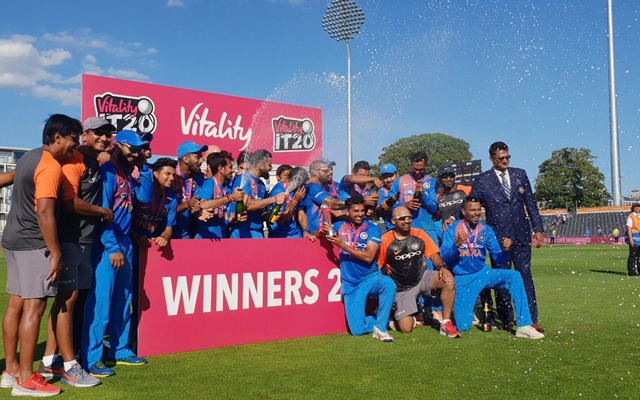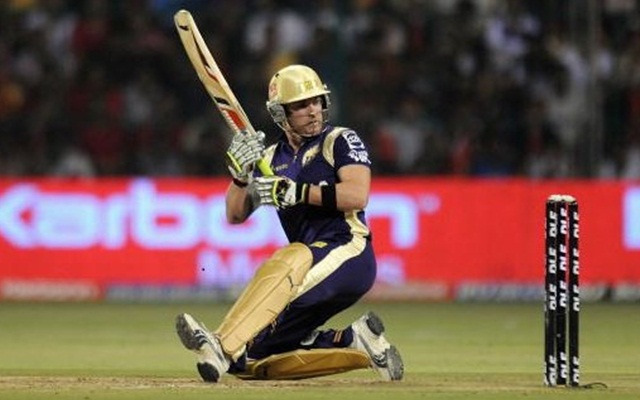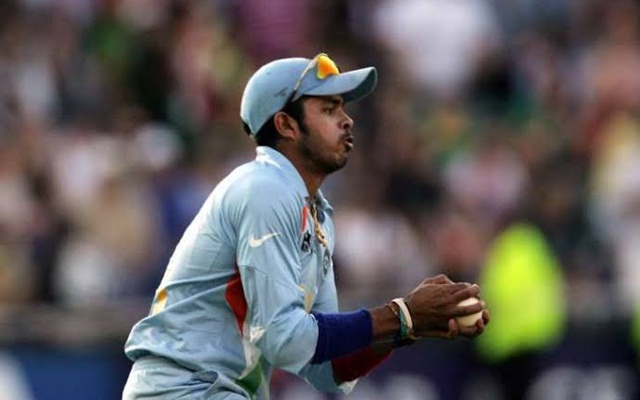How the 2007 T20 World Cup win changed Indian cricket forever
What if Misbah hadn't scooped Joginder Sharma? What if it had not been a top-edge? What if Sreesanth had dropped Misbah?
6 Min Read


“In the airrrrrrrrr, Sreesanth takes it. India win! Outstanding scenes here and India, who you’d have to say have got out of jail.”
“India- The World TT Champions”
Tell me honestly, how many times have you played then replayed, then again replayed the immortal words of Ravi Shastri on that historic evening of 24th September 2007? Tell me how many times have you had a heart-in-a-mouth moment every time you watch Misbah ul-Haq scoop Joginder Sharma over short fine-leg, in spite of it being a highlight?
24 September 2007. 24/09/2007. Monday. India vs Pakistan. World Twenty20 Finals. Johannesburg. The day when the post-1983 finally got to see what they had wished for in 1987, 1996 and 2003; the only time India came close to winning a global title. Those dreams had of-course ended sometimes in riots with people burning down the stadium or the effigies of players, on other occasions it had simply ended in tears, anger, frustration.
Its been 12 years now to that historic day in Jo’burg but you would have to go back to six months before the event, to understand the magnanimity of what India achieved that day.
Leading into the year 2007, the Indians had only one thing in mind. Will the 50-over World Cup finally be India’s? Will the Men in Blue avenge the heartbreak of the 2003 final? Will we finally have another captain standing beside Kapil Dev with a World Cup?
Of-course no one in their right mind had thought what eventually happened. And, when it did, it was like everything had come to a standstill. For me as the 14-year-old who was looking to spend the rest of the holidays watching the Men in Blue’s campaign, it was a jolt out of the blue. Within seven days, Team India was knocked out of the World Cup following defeats to Bangladesh and Sri Lanka.
It was like watching a nightmare with open eyes. It was disheartening to see the likes of Rahul Dravid, Sourav Ganguly, Sachin Tendulkar, and others watch their dreams get shattered in front of their own eyes. As usual, the reactions from the fans and media were extreme. Players’ effigies were burnt, their homes were attacked, media called for their heads. It was a chaos of the highest order.
The rise of a new leader
Following a tumultuous World Cup campaign, India went on to beat England in a Test series in England (1-0) after 21 years. But Indian cricket still needed a bit of magic to get the fans back to the game. And, the magic happened in September of that year.
Twenty20 cricket had started back in 2003 and by 2007 every country had its domestic tournament except India. The BCCI, as usual, was reluctant towards the newest format and had even protested against staging the inaugural World Twenty 20 (Imagine, if that had materialized!). However, after being outvoted among the ICC members, the Board had no choice but to send the squad for the event.
But the senior players in Sachin Tendulkar, Sourav Ganguly and Rahul Dravid decided to opt-out of the tournament and a new captain- MS Dhoni– was assigned to lead a young side. The first game against Scotland was washed out due to rain and when the Indian batting struggled in the next match against Pakistan, the majority of us fans went like ‘Ohh! Here we go again.” Another group-stage exit.
But, there was something different about this Indian side. Something refreshingly beautiful. Something which we had previously seen in the initial years of the Ganguly era. Led by a captain who was least bothered about the fear of losing; a skipper for whom the process was more important than the eventual result, this Indian team didn’t wilt under pressure. They thrived. They fielded like superheroes. They attacked. They counter-attacked under adversity, but never gave up.
The first signs of it were evident in that league-stage game against Pakistan. After having lost three wickets for not many India re-built their innings to post the arch-rivals a challenging target. And, also when Pakistan only needed one run off the last three balls, Sreesanth kept his cool as did the fielders to seal a thrilling tie; one which ended with India winning the bowl-out 3-0.
The start of a revolution

As the first few days of the World, Twenty20 provided thrilling edge-of-the-seat cricket, back home the BCCI, was involved in a tussle with the now-defunct Indian Cricket League (ICL)- a franchise-based tournament- and worried about its committee members joining the rebel-league. Then, the richest board in the world did what is now a revolution. It launched cricket’s first-ever franchise-based league tournament: the IPL.
Cricket, at that point, was essentially a country vs country sport. Lalit Modi, whose brainchild was the IPL, made that historic announcement on September 13, 2007, where city-based franchise containing a maximum of four overseas players would battle it out in Twenty20 matches for a period of 1.5 months across the length and breadth of the country, welcoming the big corporates and film stars to bid for the franchises.
Suddenly the players were being auctioned for a million dollars. The superstars who we had always dreamt of seeing together were playing for the same side. The likes of Sachin and Sanath Jayasuriya opening the batting against Shoaib Akhtar and the Eden Gardens rooting for the bowler was a sight to behold. It was the stuff of dreams. The IPL did to T20 cricket what Kerry Packer’s World series did to One-day cricket in the late 70s and early 80s.
If Packer brought colored clothing, day-night fixtures back then, the IPL helped in financially securing a lot of domestic and International cricketers while also serving as a platform to unleash young talent from across the world. It has also helped cut animosity that existed between international cricketers in the pre-IPL era. But most importantly, the IPL has brought women and young kids to the game courtesy the tournament’s perfect blend of cricket and entertainment.
The Bad and What-if?

With good comes bad too. And, the IPL is not different. Its success and the financial security that it gave, many cricketers have started to ditch their national sides over their franchise, leading to the birth of Club vs Country debate. And with every country now having its franchise-based tournament, there are fears of they being easy fodder for the bookies; as we saw in 2013 or continue to do so in other franchise-based leagues.
But, despite these detractions, the invention of the IPL remains the biggest cricketing revolution after Packer’s World series cricket. And as I write this, I can’t help but think What if? What if Rohit hadn’t hit that half-century against South Africa? What if Yuvraj hadn’t stroked that 30-ball-70 in the semis against Australia? What if the bowlers hadn’t bowled as they did throughout the tournament? What if Gambhir hadn’t scored that crucial 77 in the finals?
And, most importantly, what if Misbah hadn’t scooped Joginder Sharma? What if it had not been a top-edge? What if Sreesanth had dropped Misbah? If it had? then India’s efforts to reach would have been shrugged off as a fluke, a loss to arch-rival wouldn’t have been easy to digest and even though the IPL would have rolled on eventually, it wouldn’t have got the massive fillip that it got after MSD and his boys lifted the World Twenty20 title on 24-09-2007.
Download Our App